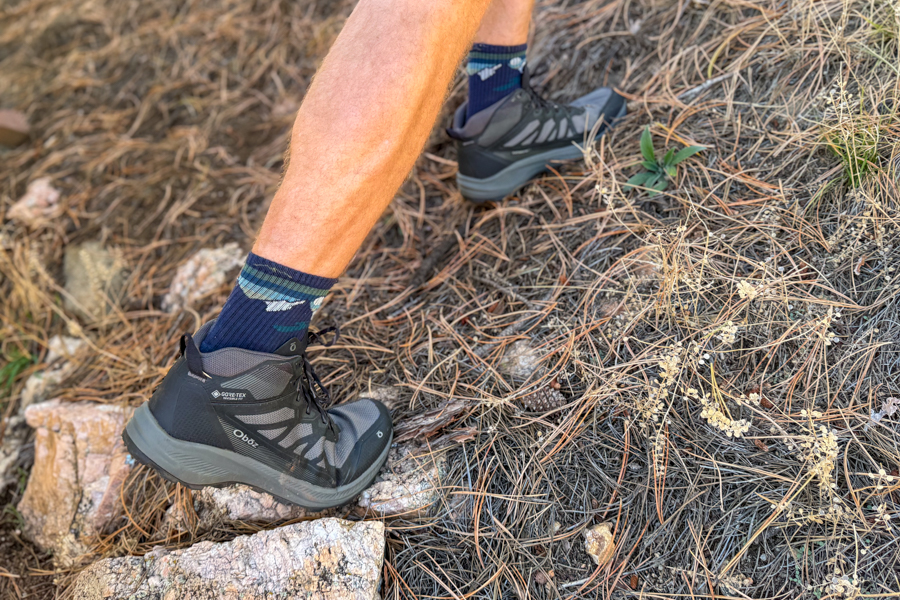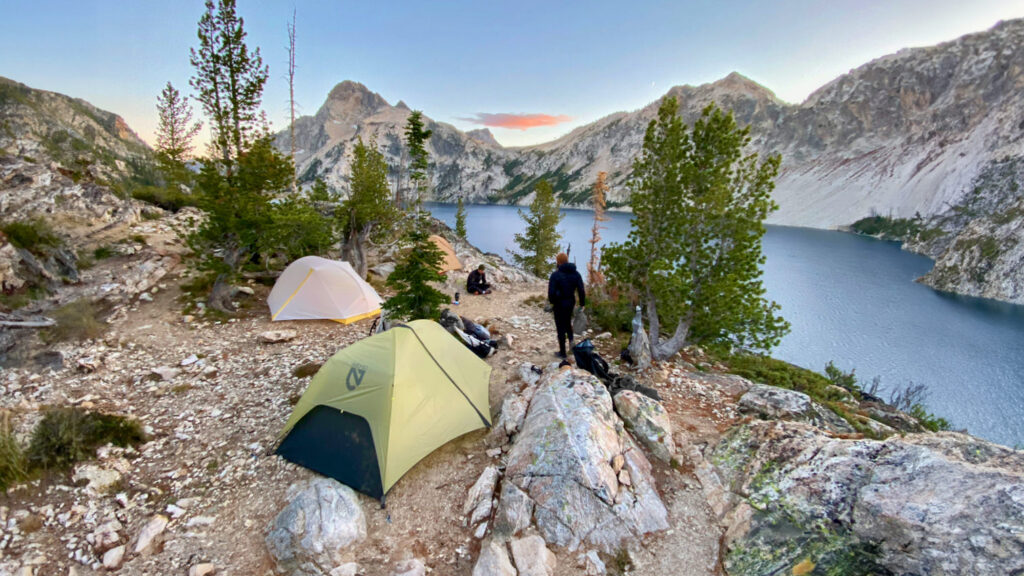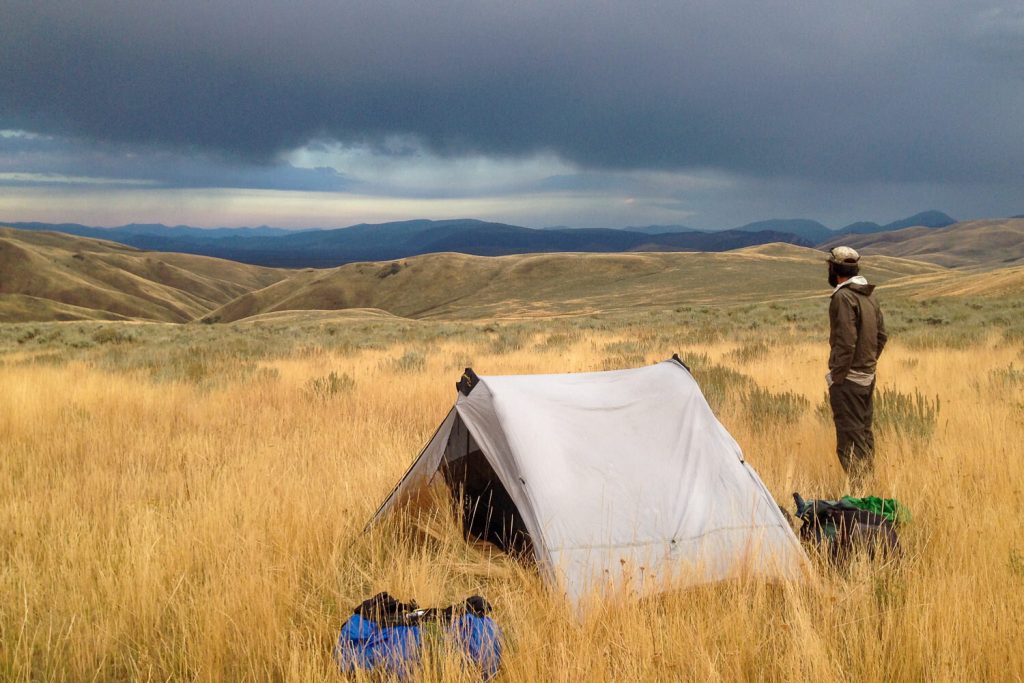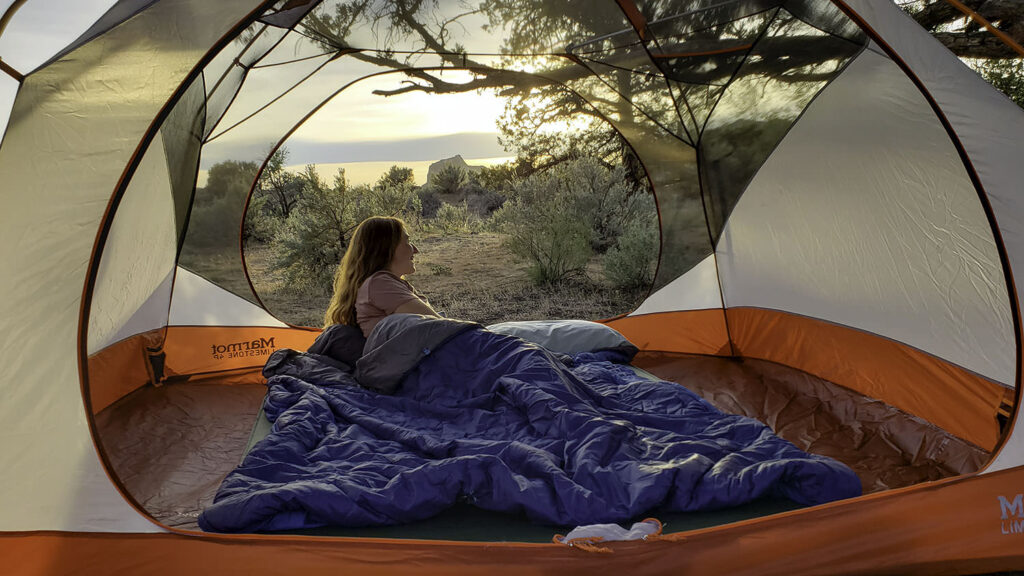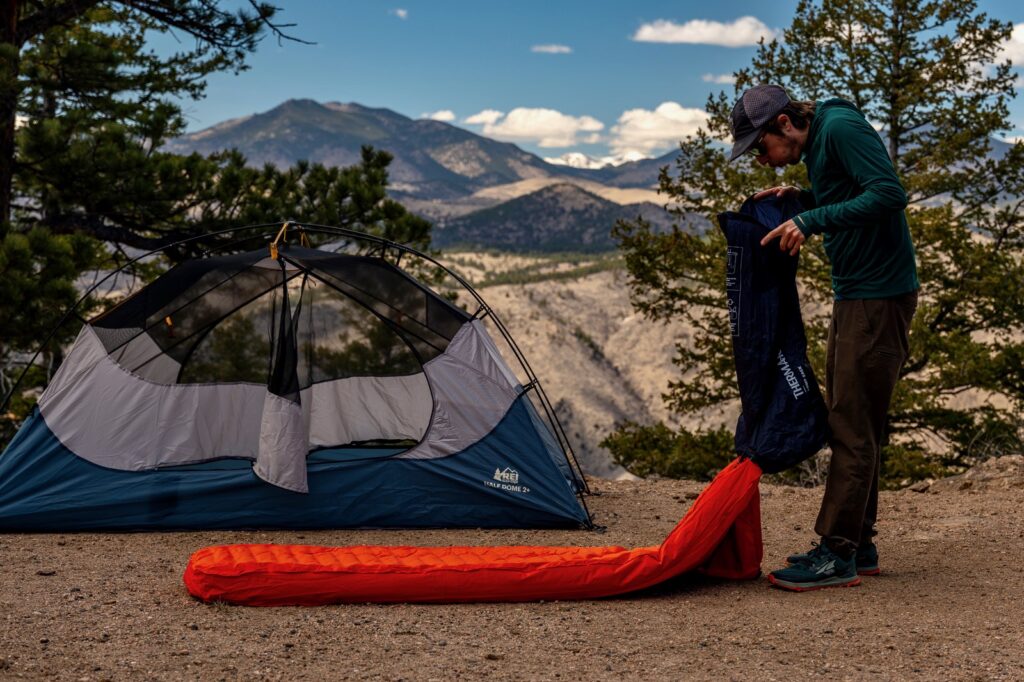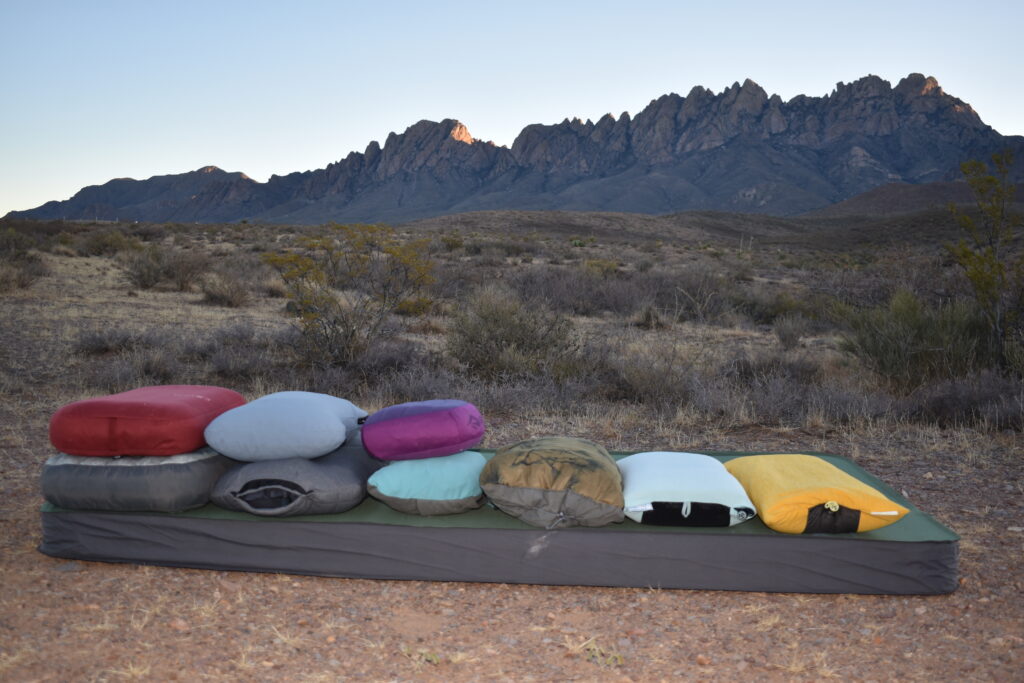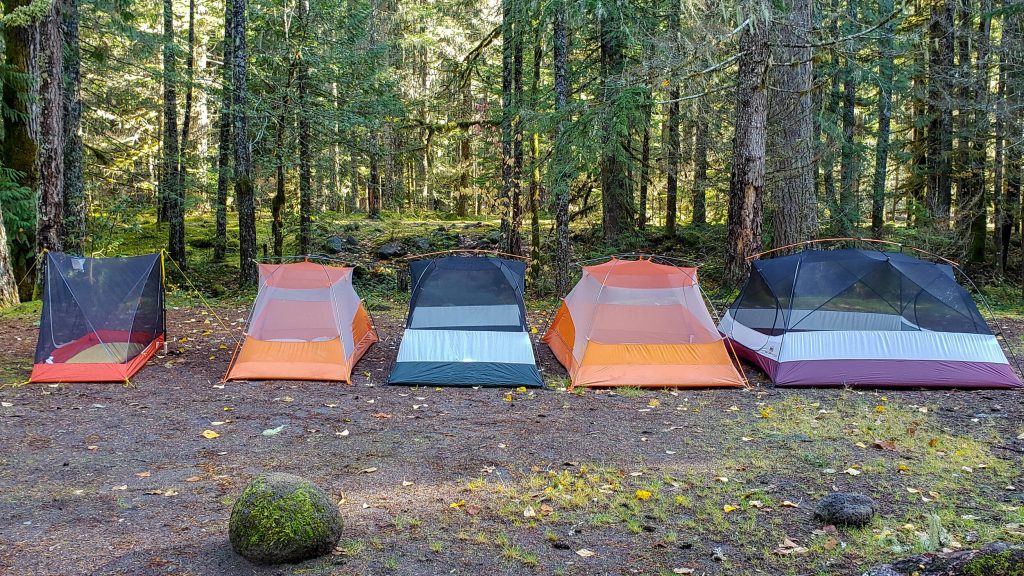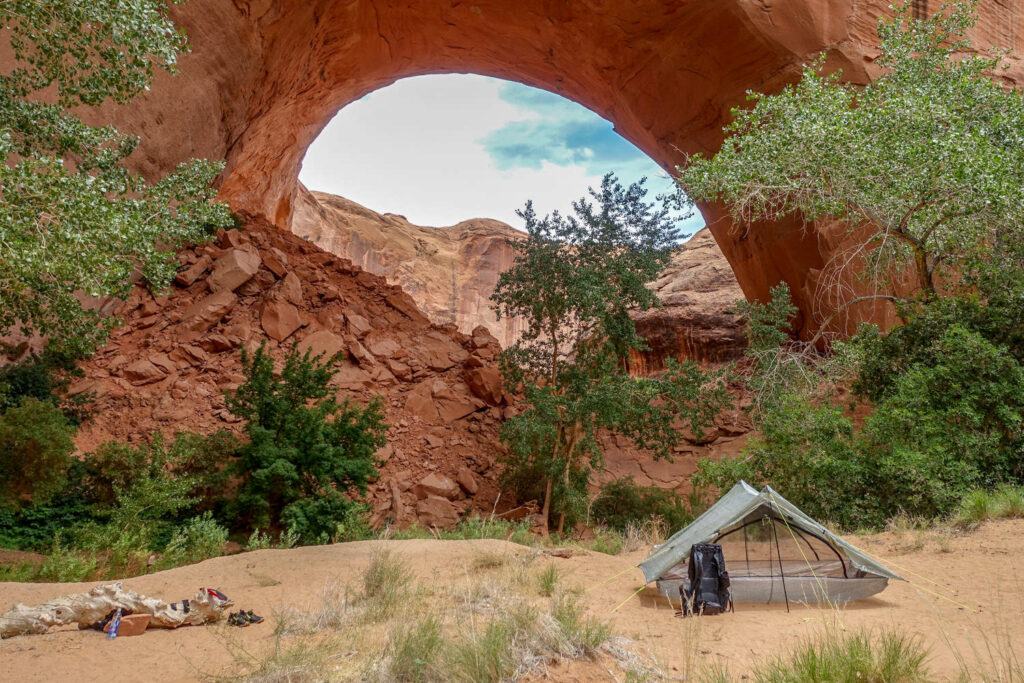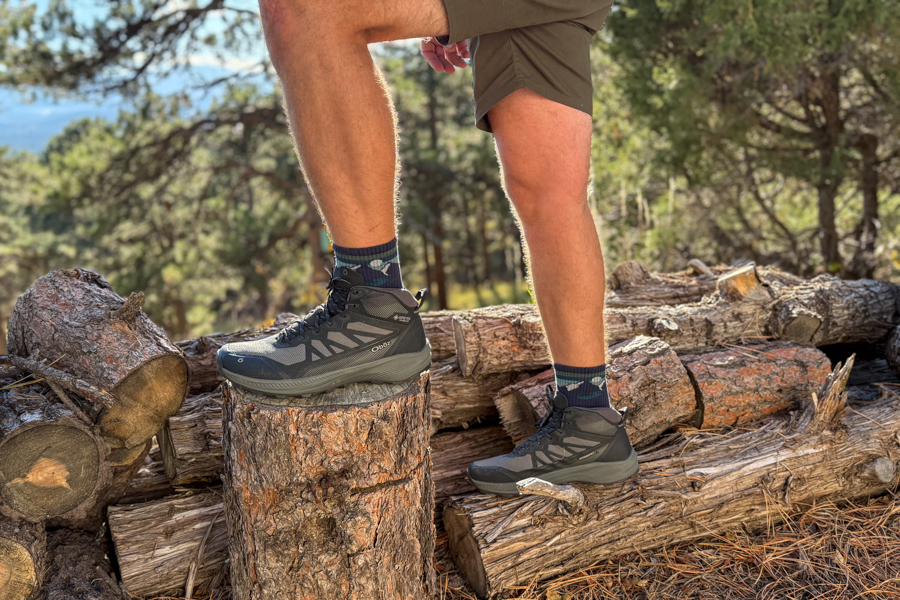
Bottom Line
The Oboz Katabatic LT Mid GTX is a lightweight, waterproof hiking boot designed for speed and agility, making it an excellent choice for day hikers and fast packers who want to keep their load light without sacrificing support. During our testing in Colorado’s foothills and high country, where we encountered everything from dry gravel to early-season snow, we found the Katabatic LT Mid performed best on moderate trails where nimbleness and breathability mattered most. With a flexible build and minimal break-in, it fits and performs more like a trail shoe than a stiff hiking boot.
The boot offers solid grip and underfoot protection while keeping weight impressively low. That said, it may not be the best choice for long hauls with heavy packs or rough, technical terrain, where stiffer models typically provide better support and grip. You’ll get decent mileage out of these, but if you’re tough on gear or tend to hike rocky, rugged trails, a more heavy-duty boot will hold up better in the long run.
Overall, we think it’s a strong value for fast-moving hikers. For more top-performing options, check out our guide to the best men’s hiking boots.
How We Tested
We tested the Oboz Katabatic LT Mid GTX boots throughout late summer and early fall in Colorado’s Front Range. Our hikes ranged from dry, dusty foothill trails to muddy singletrack and slick granite slabs in the high country. We wore them both under load and without, logging roughly 150 trail miles across day hikes and lightweight overnight trips. From stream crossings to schleping up steep switchbacks, we pushed these boots across a wide range of 3-season conditions to see how they performed in the real world.
Quick Specs

Men’s Oboz Katabatic LT Mid GTX
Best Boot for Fastpacking
CleverHiker Rating: 4.6/5.0
Price: $190
Weight (Pair): 1 lb. 9.6 oz.
Upper Material: Recycled polyester
Sizing: Wide available
Pros
- Comfortable
- Breathable waterproofing
- Stable
- Excellent traction
- Lightweight
Cons
- Durability
- Not the best for scrambling
- Expensive
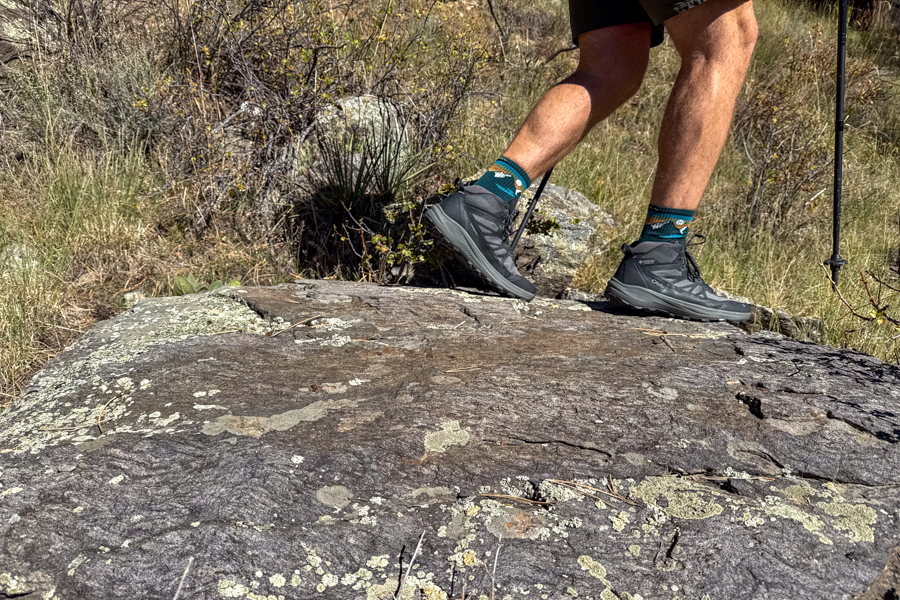
Comfort
The Katabatic LT Mid feels more like a trail shoe than a traditional hiking boot. We found this boot to be extremely comfortable after a brief break-in period. Right out of the box, this boot felt light, a little stiff, but still comfortable. The mesh-lined synthetic upper moves easily with each step, which helped reduce pressure points and hotspots on long days. Initially, we experienced some pressure and stiffness in the toebox, but after just a few short hikes, things began to soften up and felt dialed.
Gear analyst Ben Dawson has long-term testing experience with both the “wide” and “standard” width Katabatics. His number one gripe with the original Katabatic is that they were too narrow. The wide is a nice addition to the Katabatic lineup.
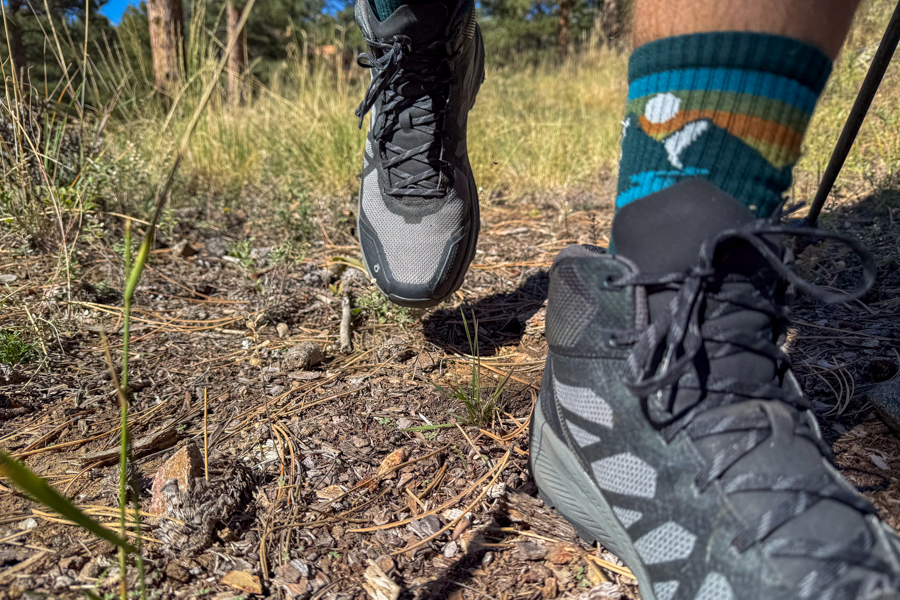
Ankle Support
The Katabatic LT Mid provides more ankle support than you’d expect from such a lightweight boot. While most boots in this weight class offer minimal structure, we found the Katabatic to be on the higher end of the support spectrum. Like the Salomon X Ultra 5 Mid, it hits a nice middle ground. They’re flexible enough to move fast, but still supportive enough to give you confidence with a pack on moderate terrain.
We appreciated the added stability when carrying a 35-pound load through Colorado’s dry, dusty foothills. The extra structure around the ankle helped on both climbs and descents, especially on soft-packed and loose trails. While it doesn’t offer the same stiffness or “locked-in” feel as traditional leather boots, but for fast-moving hikers who stick to established trails, it’s a solid option worth considering.
More experienced hikers might find the support adequate for alpine backpacking, but casual users may want something more robust. If you frequently carry heavier loads or venture off-trail, you’ll probably want a boot with a stiffer ankle and a more secure fit.

Weight
When it comes to midweight waterproof hiking boots, the Oboz Katabatic LT Mid GTX is one of the lightest models we’ve tested. At a listed weight of 1 lb. 9.6 oz. per pair, it edges out competitors like the Salomon X Ultra 5 Mid GTX and adidas Terrex Skychaser AX5 Mid. For transparency, that spec weight likely refers to a men’s standard size 11; our size 13 wides tipped the scales at 2 lbs. 2.8 oz., which still felt impressively light on trail.More importantly, the Katabatic feels light underfoot. We’re not going to say it wears like a trail runner (because that phrase is starting to feel overused), but it does feel closer to a low-profile hiking shoe than a traditional mid-height boot. It’s nimble, responsive, and doesn’t weigh you down—even during long days with a moderate pack.
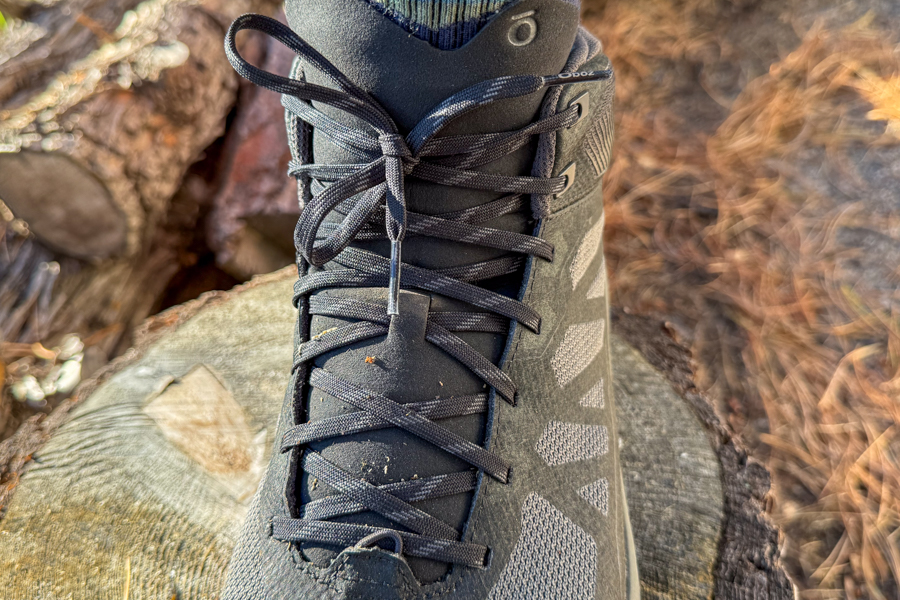
Traction
The Oboz Katabatic LT Mid GTX delivers solid all-around traction that works well for most 3-season trail conditions, though it falls short of the grip offered by more aggressive, mountain-ready boots. During testing on everything from Colorado’s dry, loose foothills to the slick, limestone-laced trails of the Blue Ridge Mountains, the Katabatic held its own. The outsole design offers dependable bite on packed dirt, rocks, and damp trail surfaces.
That said, the lugs are relatively modest in both size and stiffness. While that helps keep the ride smooth and quiet on flatter trails, it means this boot isn’t quite as surefooted when things get muddy or off-camber. We experienced some slipping in slush and soupy mud, particularly under heavier loads.
Still, for hikers sticking to well-traveled paths and mixed terrain, the Katabatic offers the kind of versatile, no-drama traction that makes it great for everyday use. It’s not built for alpine scrambles or sloppy shoulder-season slogs—but for most day hikes and lightweight backpacking trips, the grip is more than adequate.
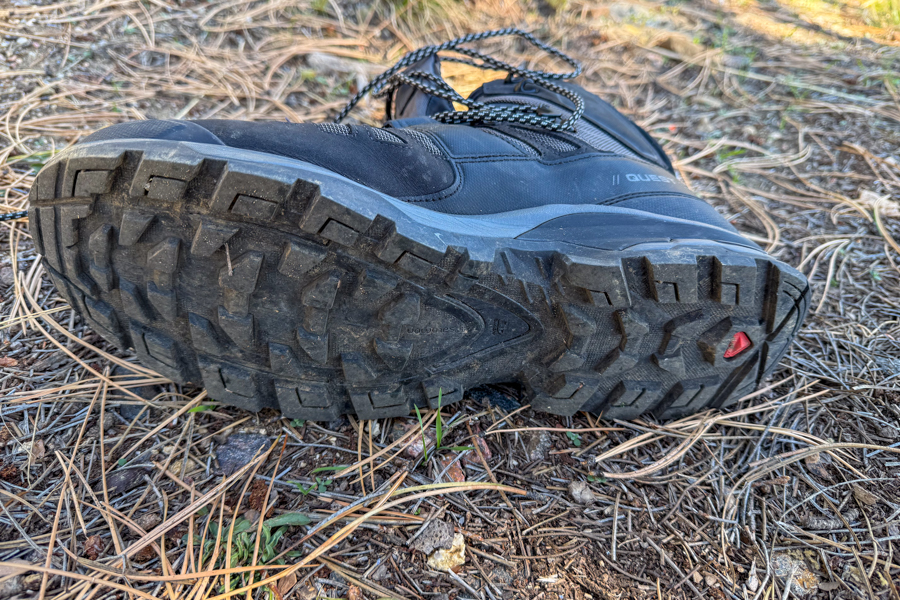
Weather Resistance
We were genuinely impressed by how waterproof the Katabatic LT Mid GTX turned out to be. Oboz recently swapped out their proprietary B-DRY membrane in favor of a GORE-TEX liner, and during testing, that change paid off. Time and again this fall, we found ourselves caught in unexpected storms and soggy trail conditions. Through steady rain, shallow creek crossings, and long stretches of wet terrain, the boots consistently kept our feet dry. The upgraded membrane, along with the gusseted tongue and tightly sealed synthetic upper, does a great job of shedding water, and we didn’t notice any obvious weak points or leaks at the flex zones, even after several miles on saturated trails..
Despite the boot’s lightweight build, it punches above its weight in terms of water protection. While some breathable mesh-heavy boots tend to feel soggy after a while, the Katabatic stayed impressively dry throughout testing.
Even with a GORE-TEX liner, no waterproof membrane is completely infallible; once fully saturated, moisture can eventually seep through. That’s true across all brands. If you regularly hike in persistently wet environments or spend extended time in wet grass & brush, it’s worth considering your conditions carefully. While the Katabatic holds up surprisingly well for its weight and construction, a leather boot with a durable water repellent (DWR) finish paired with a waterproof membrane will provide more reliable long-term protection in extra-wet climates.
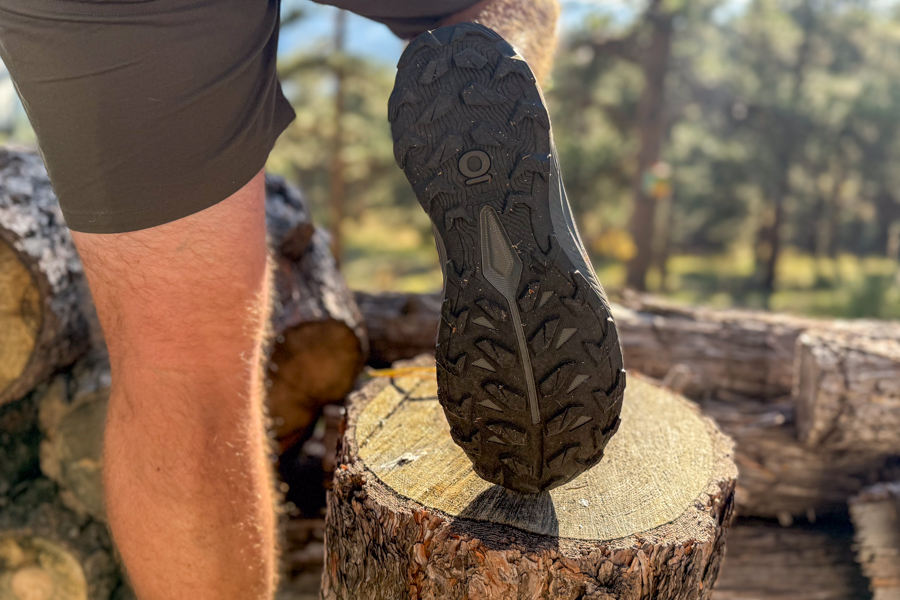
Durability
The Katabatic LT Mid GTX holds up well on trail, but, as with most lightweight synthetic boots, it has its limits in rugged environments. Our gear analyst, Ben Dawson, has put hundreds of miles on these boots across Colorado, Vermont, and New Hampshire. Through that extended testing, he found that while the boots perform admirably on moderate trails, they begin to show signs of wear more quickly when exposed to frequent off-trail abuse, especially in alpine zones where scree and talus are common. In particular, Ben has observed premature wear and even small tears developing near the ankle padding, an area where lightweight synthetics are softer and more vulnerable.
That said, the boots are well-constructed for what they are. The stitching has held up over time, and the reinforced areas around the midsole help protect against trail-level abrasion. For hikers who mostly stick to maintained trails or do the occasional rocky detour, the durability should be more than adequate.
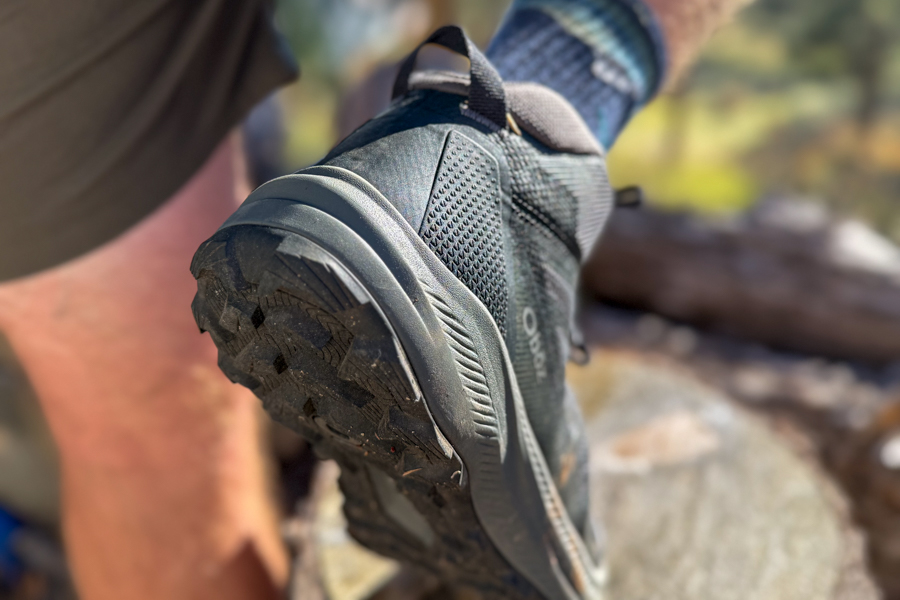
Should you buy the Oboz Katabatic LT Mid hiking boot?
If you’re a hiker who loves to move fast, keep your pack lean, and still want dependable waterproofing and support, the Oboz Katabatic LT Mid GTX might be your sweet spot. This boot is built for folks who favor agility over armor, light enough to feel nimble on trail yet capable enough to handle moderate loads and changing terrain. You’ll especially appreciate it on day hikes, fast overnights, or mixed-terrain routes where you want both protection and responsiveness.
That said, it’s not the right tool for everyone. If you’re frequently carrying heavy loads through rugged off-route terrain, or you prefer a bit more structure and long-term durability, you might want a sturdier, more rigid option. While the Katabatic holds up impressively well for a synthetic mid, heavy alpine scrambles and repeated abrasion will eventually take their toll.
In terms of value, it offers an excellent blend of performance and versatility. For hikers who don’t demand full-on mountaineering specs but still expect good traction, waterproofing, and reasonable support, this boot gives a lot of bang for the buck.

What other hiking boots should You consider?
If you’re looking around beyond the Katabatic, check out our guide to the best hiking boots for more options. Here are three that pair nicely with the Katabatic’s vibe while offering their own strengths:
Salomon X Ultra 5 Mid GTX Review: This is the natural sibling to the Katabatic. You’ll get a similar light, fast-moving feel, but the X Ultra 5 adds a little more structure and support. If you want something that’s still nimble but a bit more locked in for steeper terrain, this is a solid step.
HOKA Anacapa 2 Mid GTX Review: Like the X Ultra 5, these boots are lightweight with a narrow fit and a responsive feel. But if comfort is top priority, the Anacapa 2s are the winner with their forgiving foam soles and superior traction. They offer a flexible, nimble experience that’s perfect for hikers who want speed over harsh weather resistance and durability, making them ideal for moderate conditions.
KEEN Hightrail Mid WP Review: For those who want more ruggedness and a bit more room, the KEEN High Trail Mid WP delivers. It trades some lightness for durability and toe protection, and the WP (waterproof) model adds confidence when trails get wet or sloppy.
